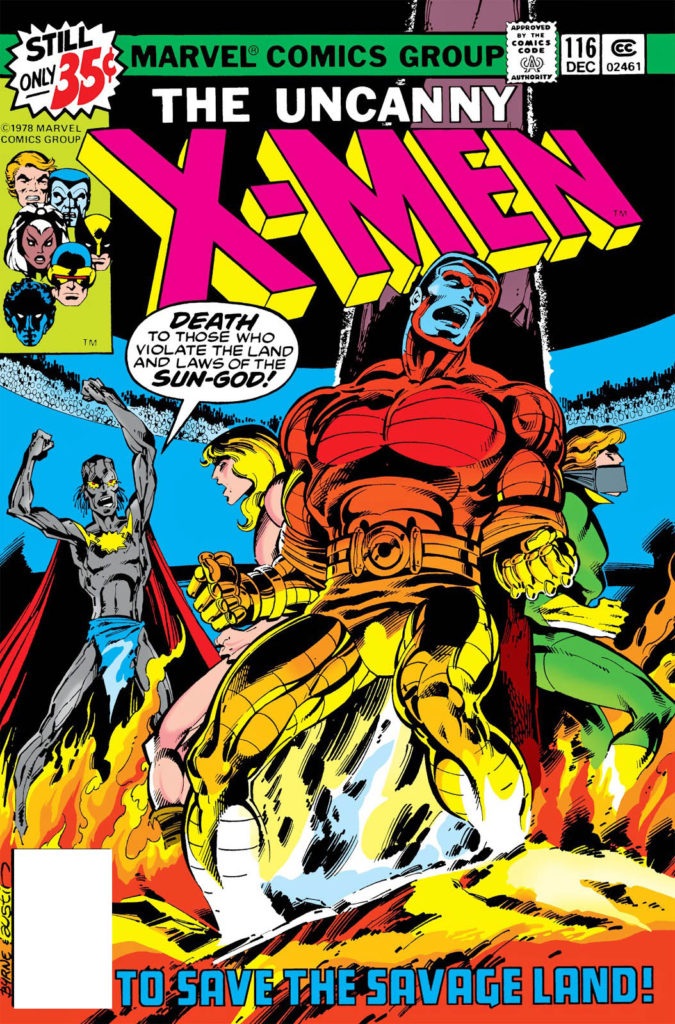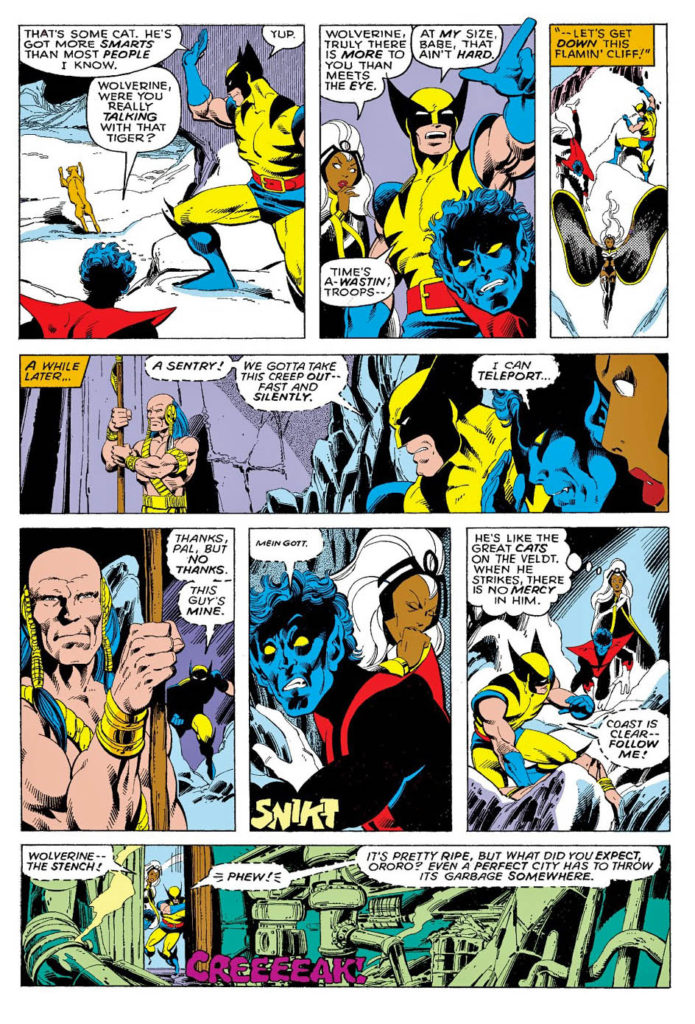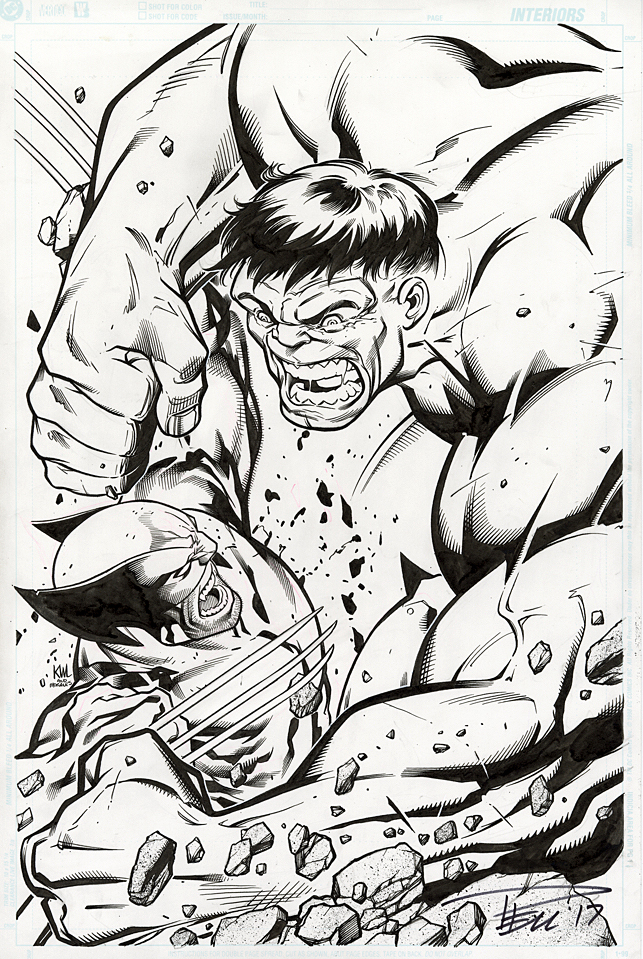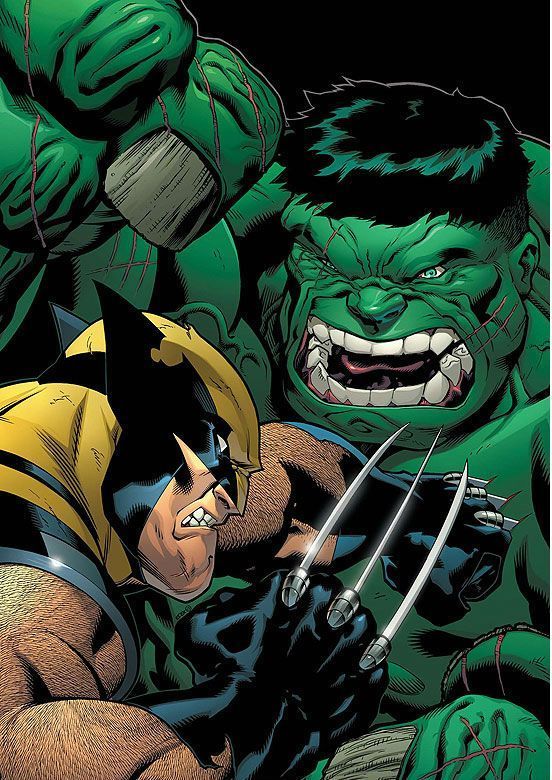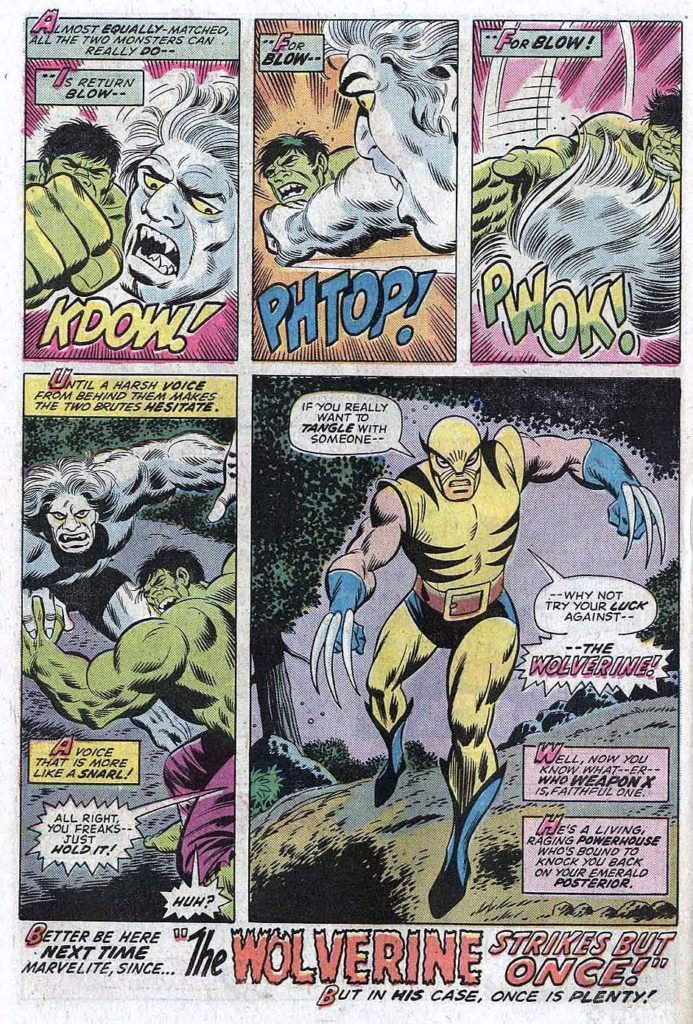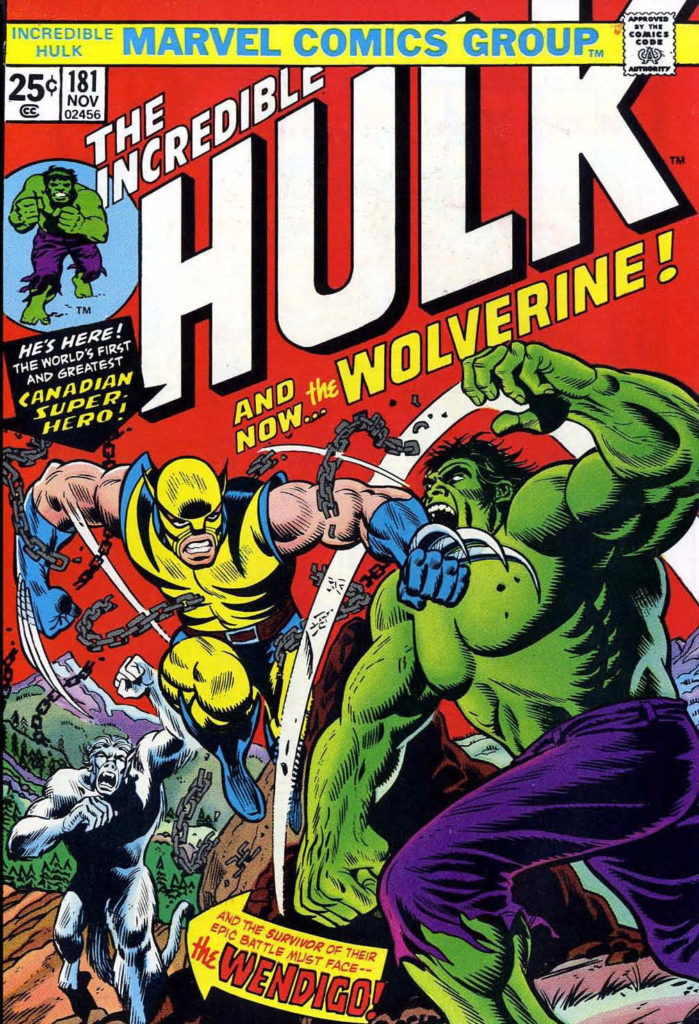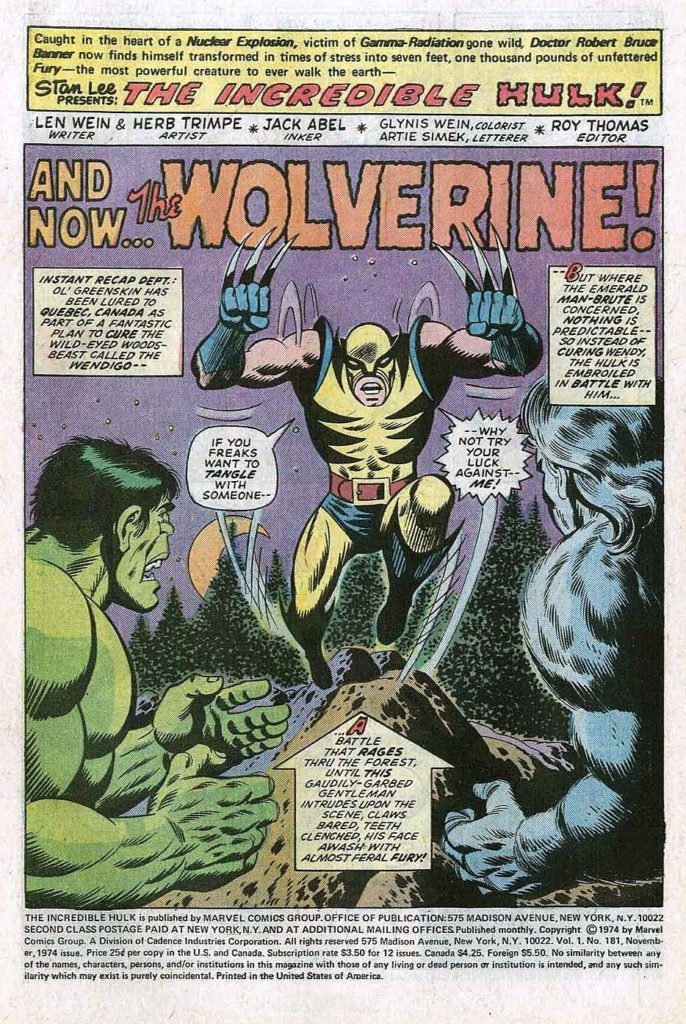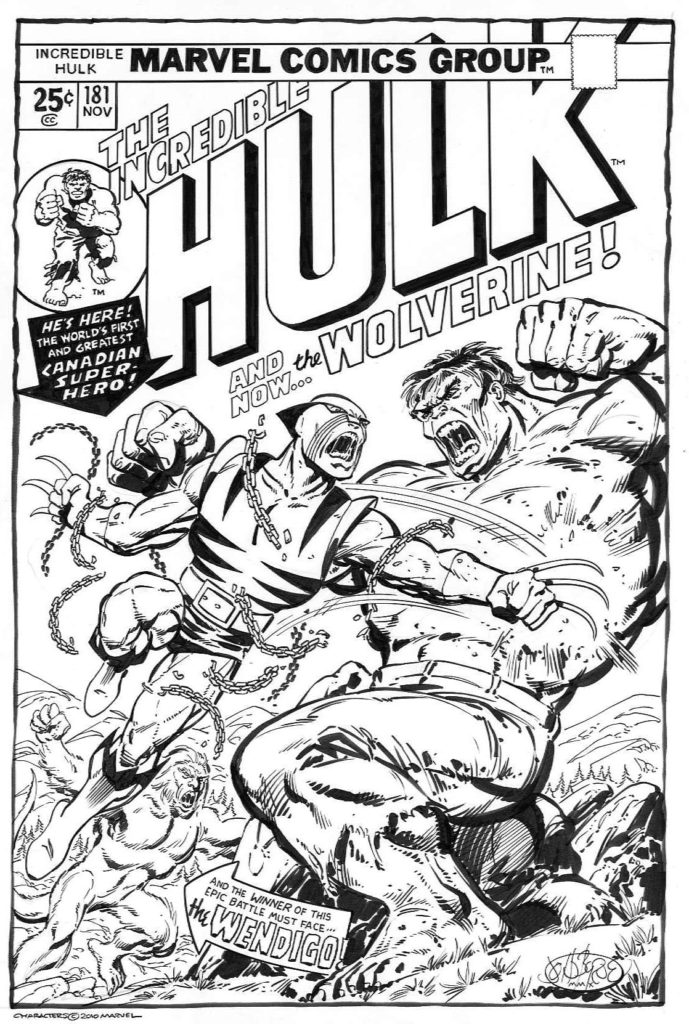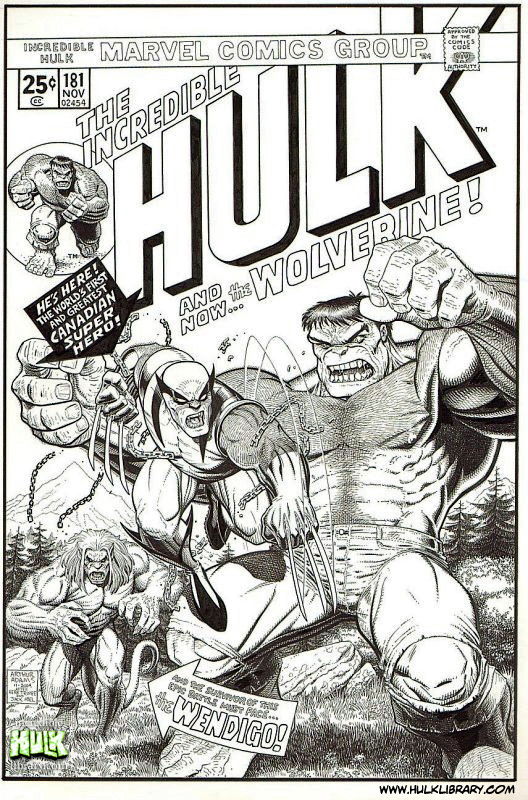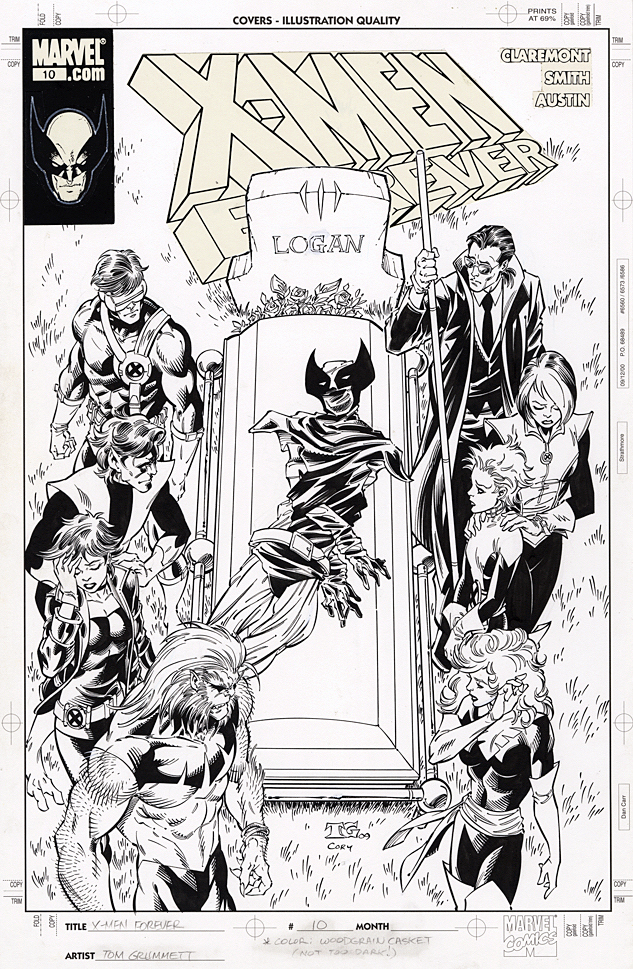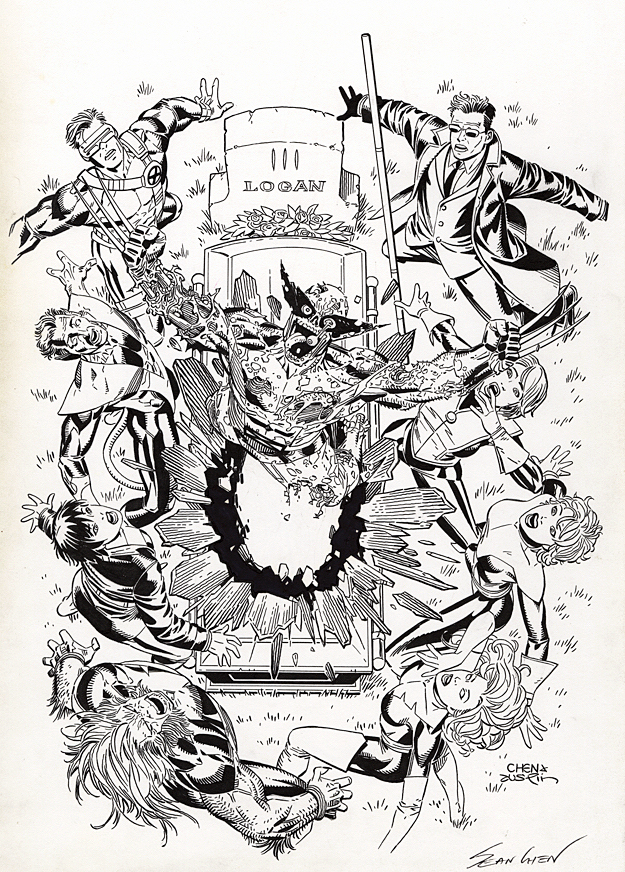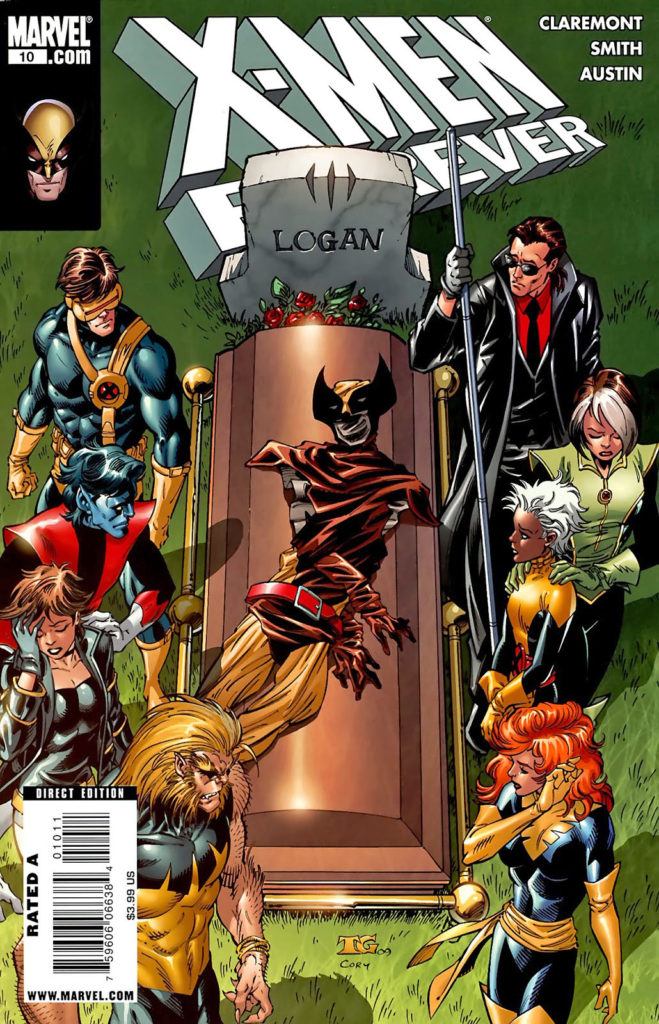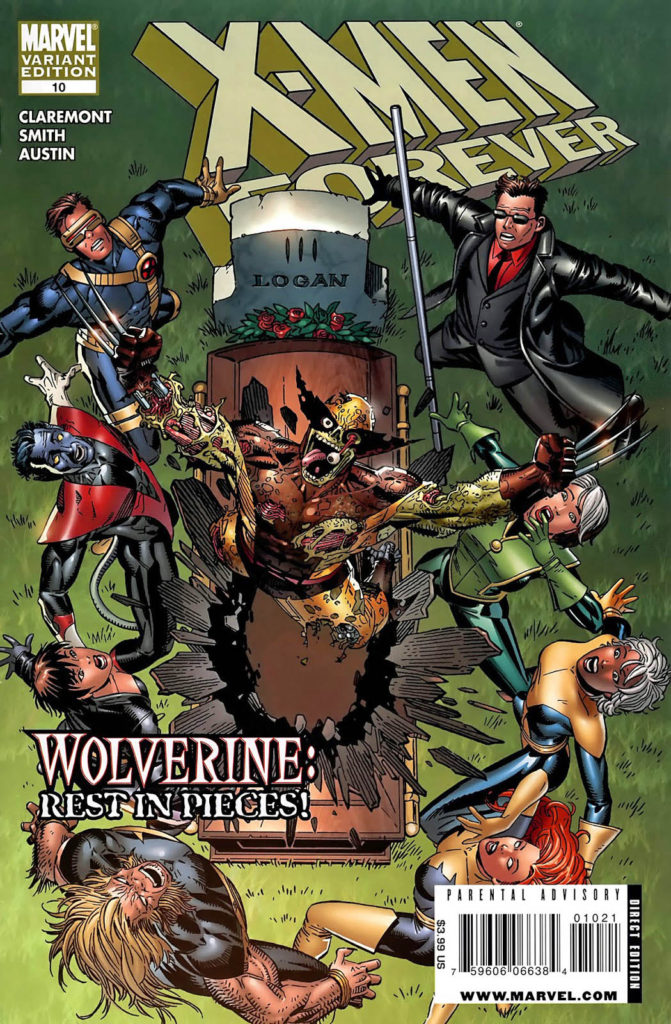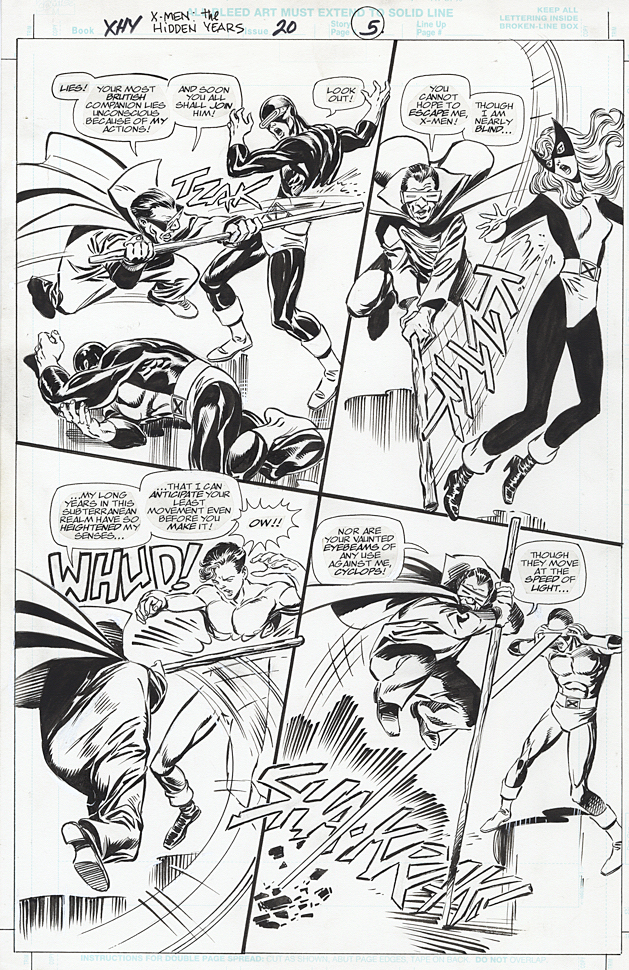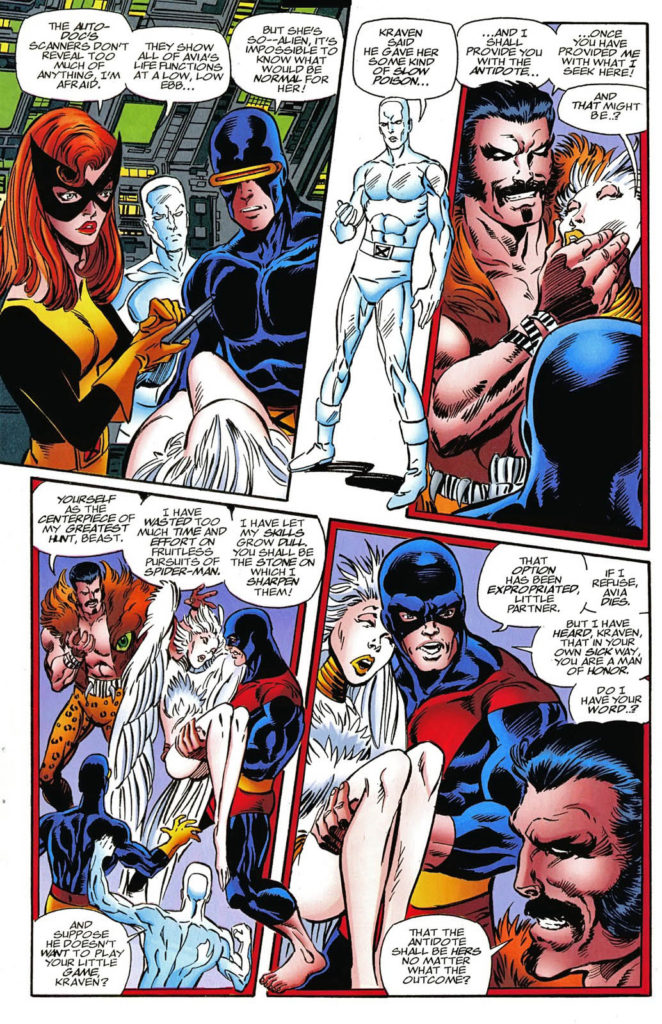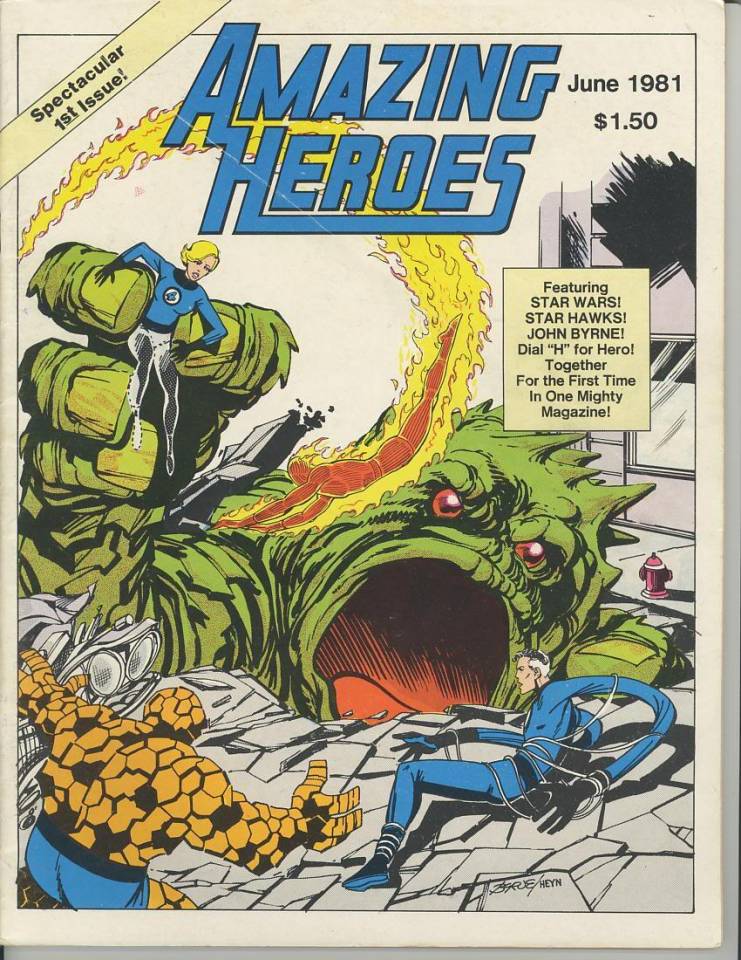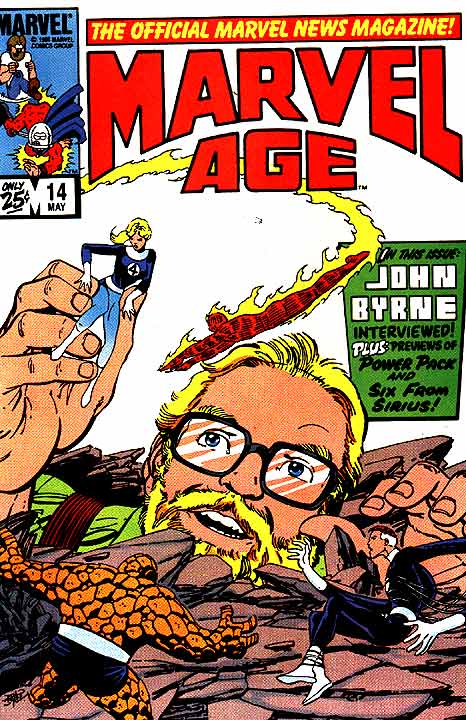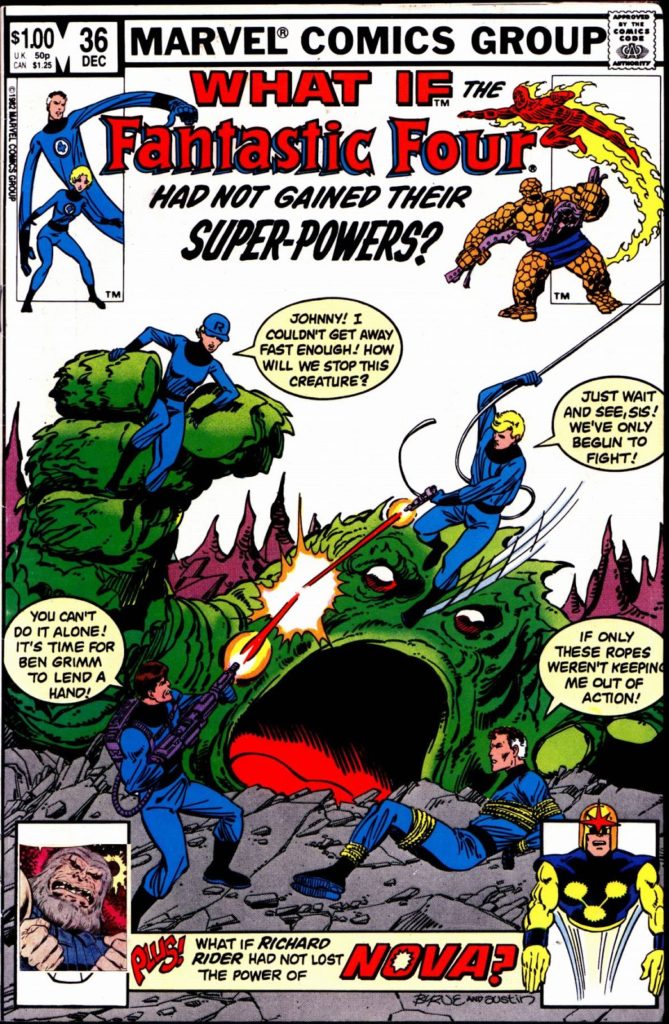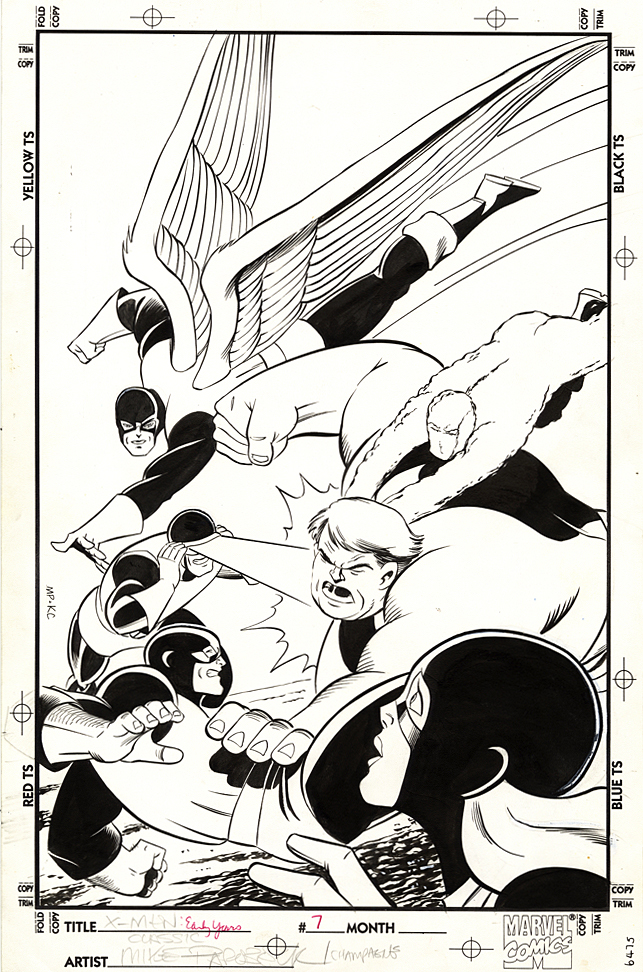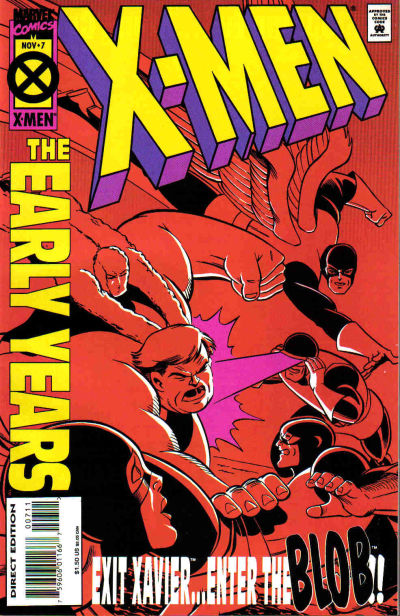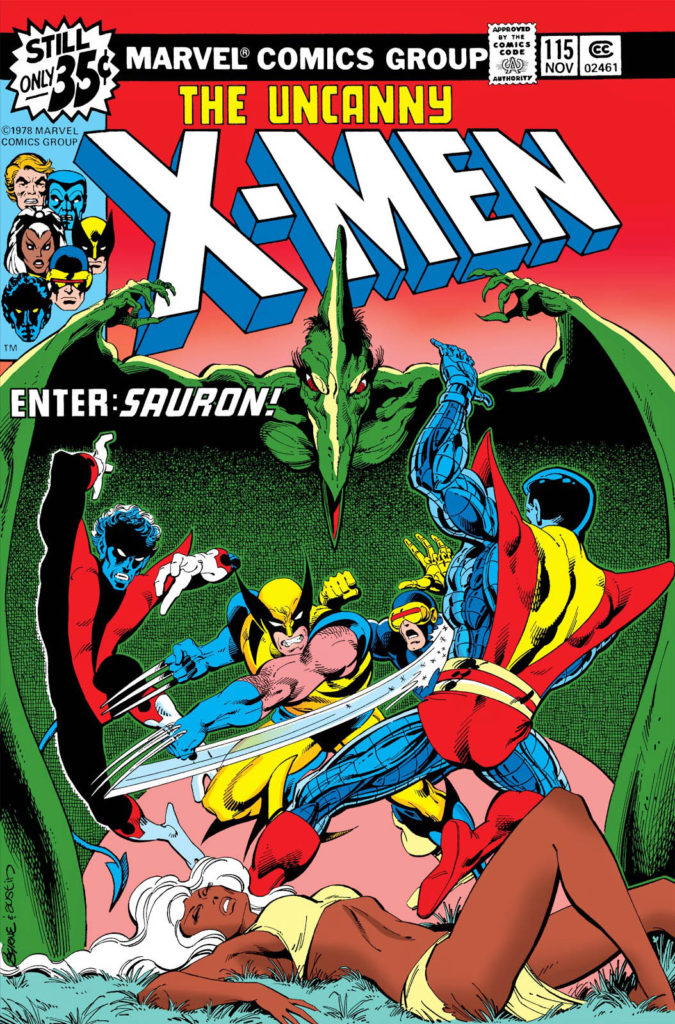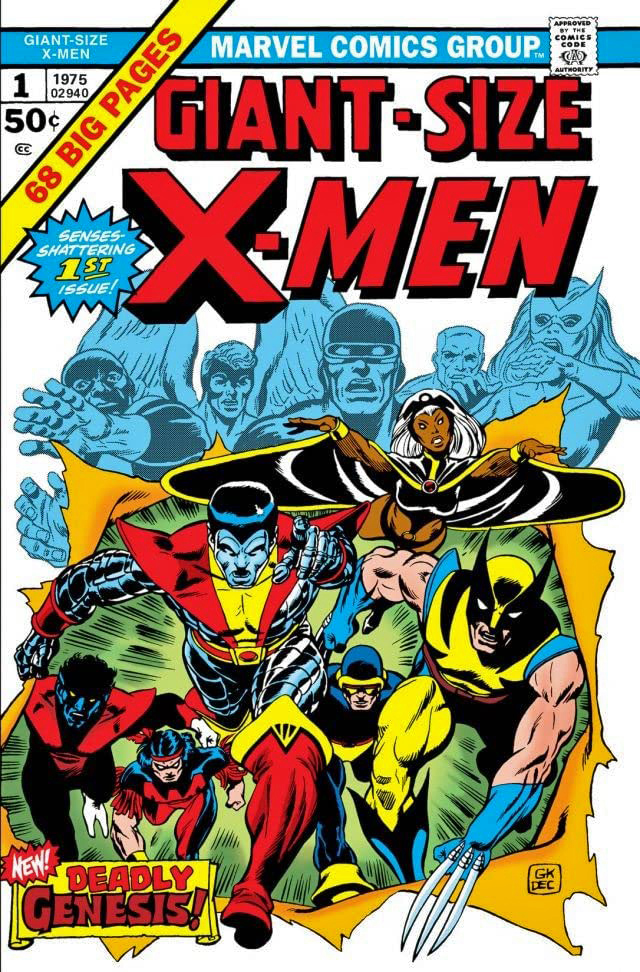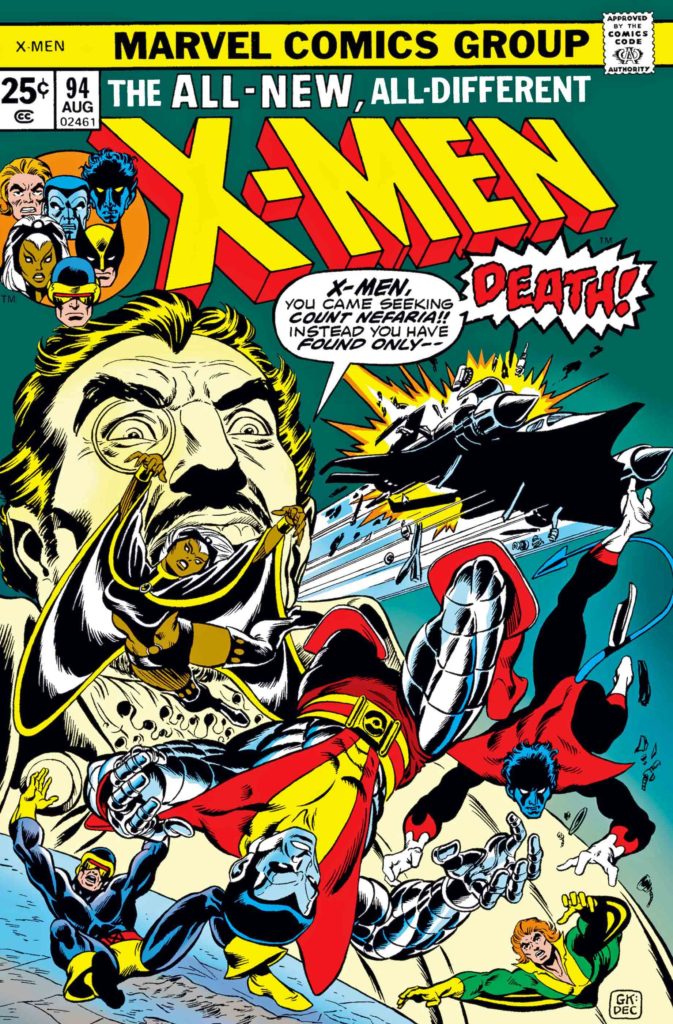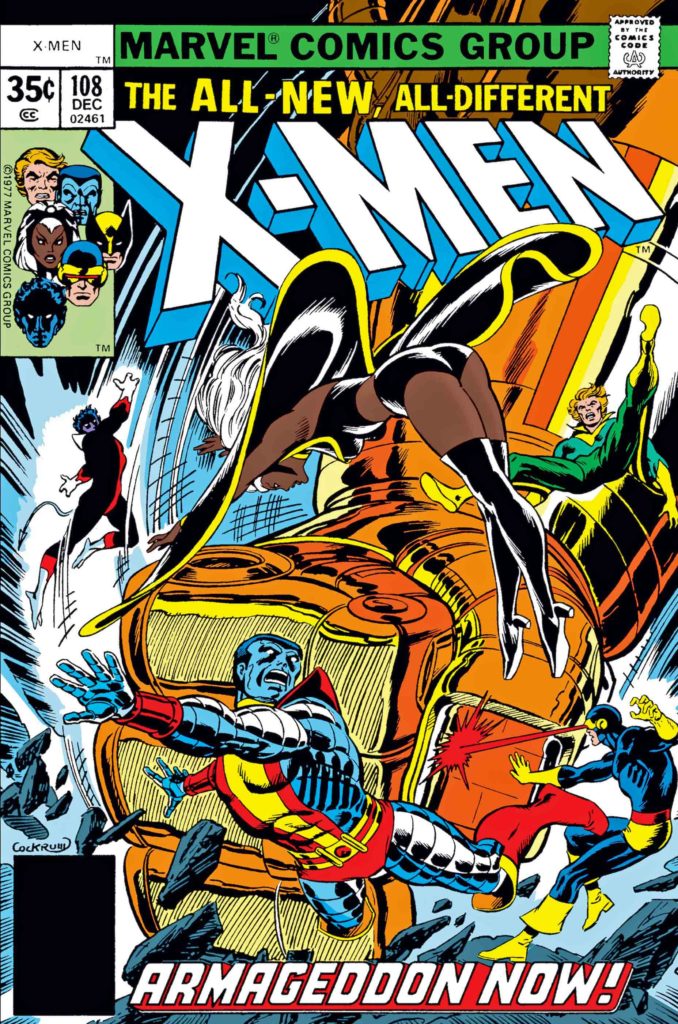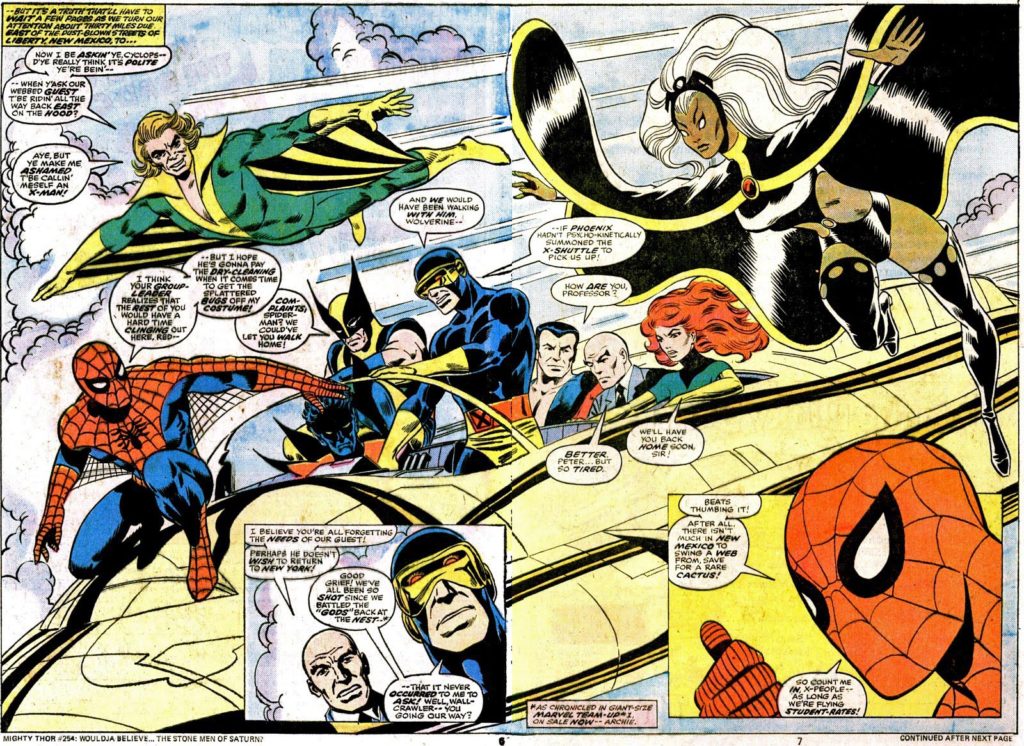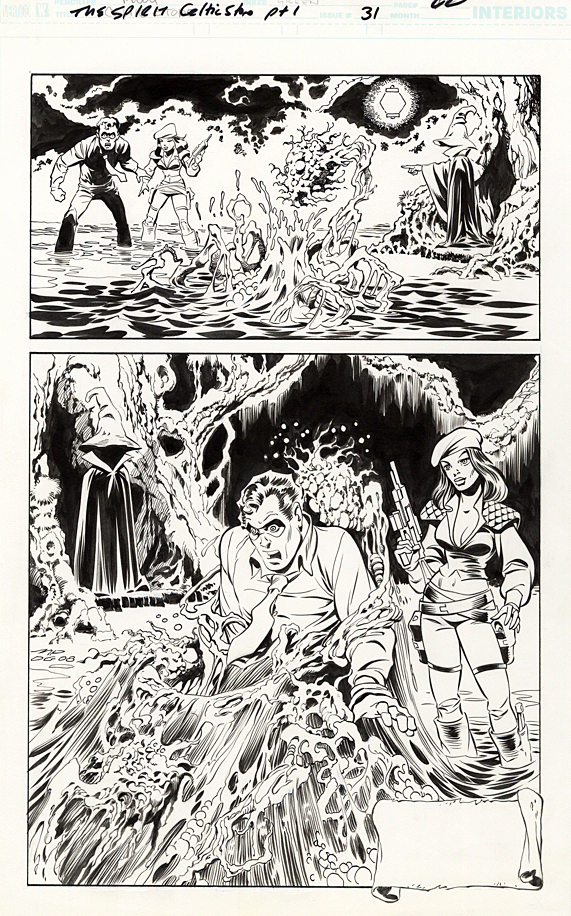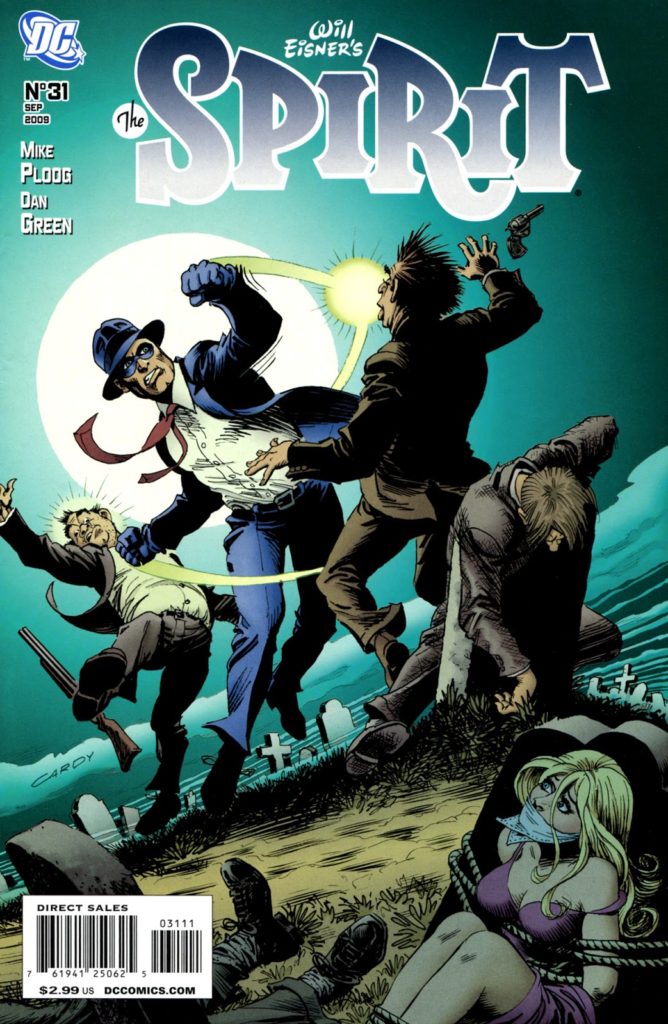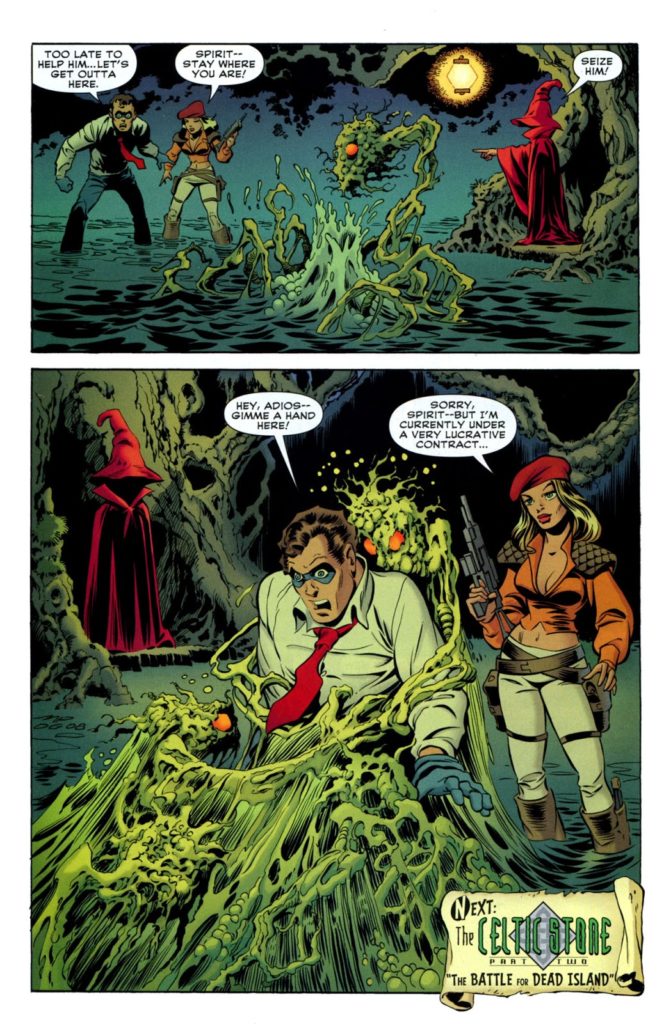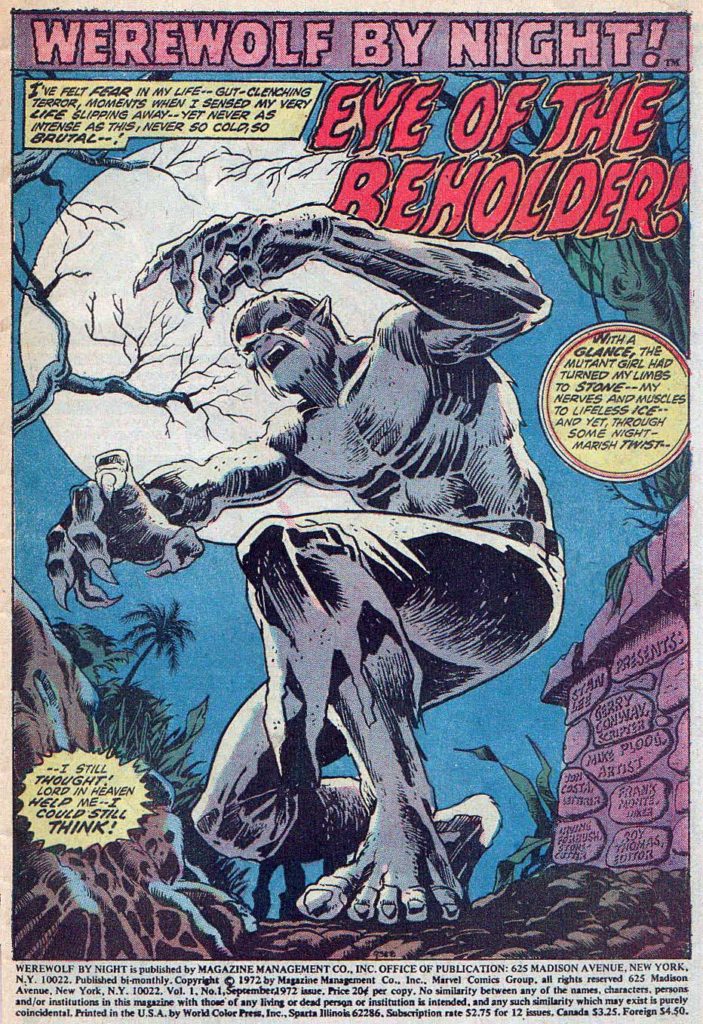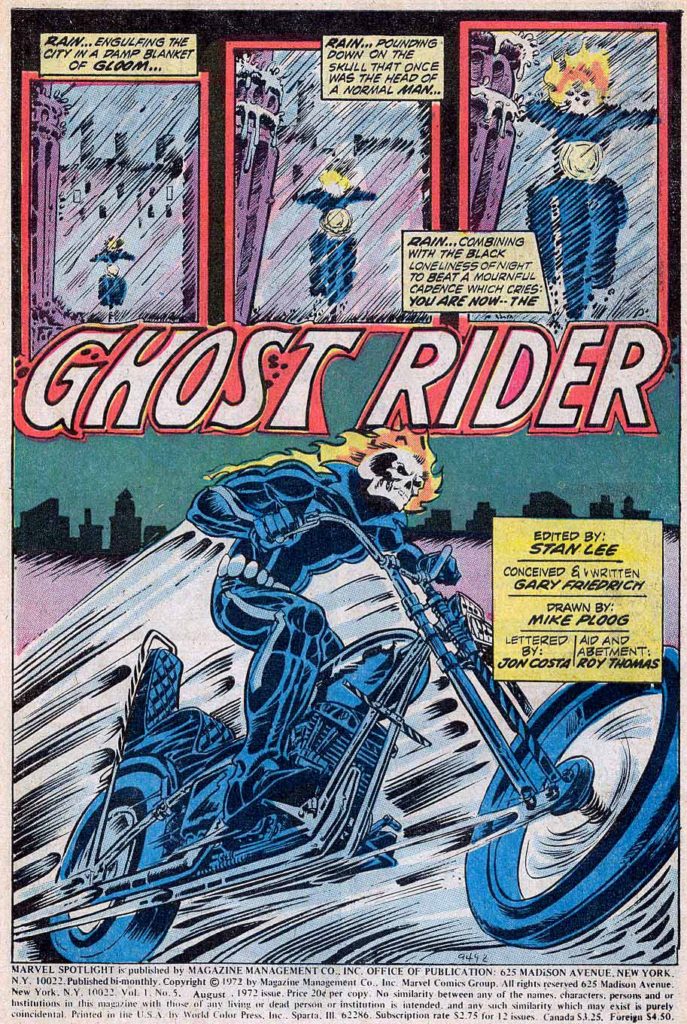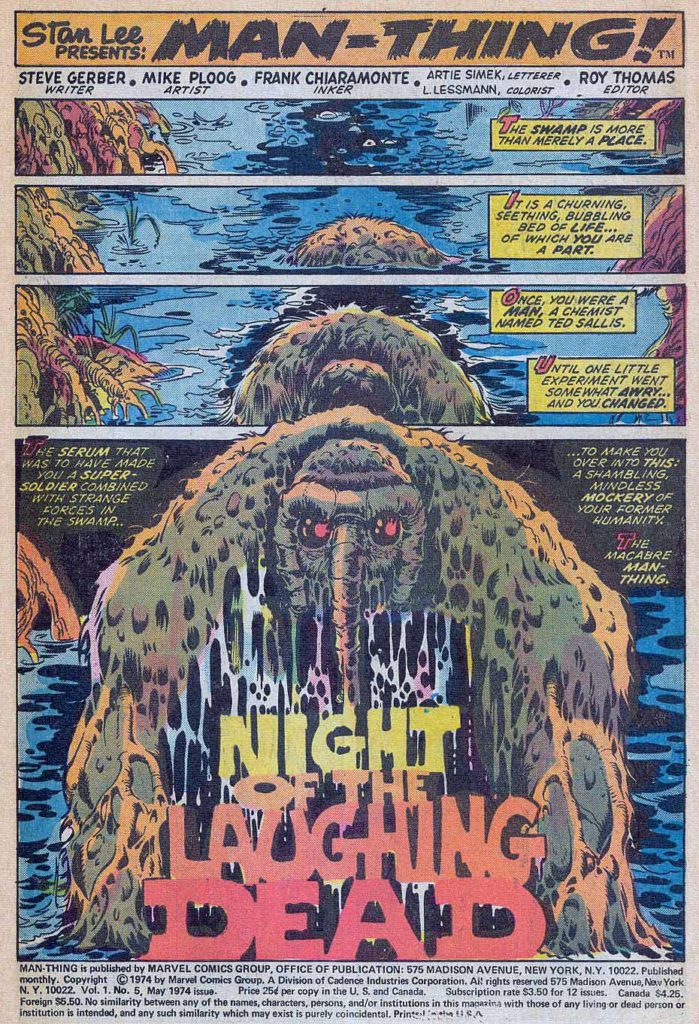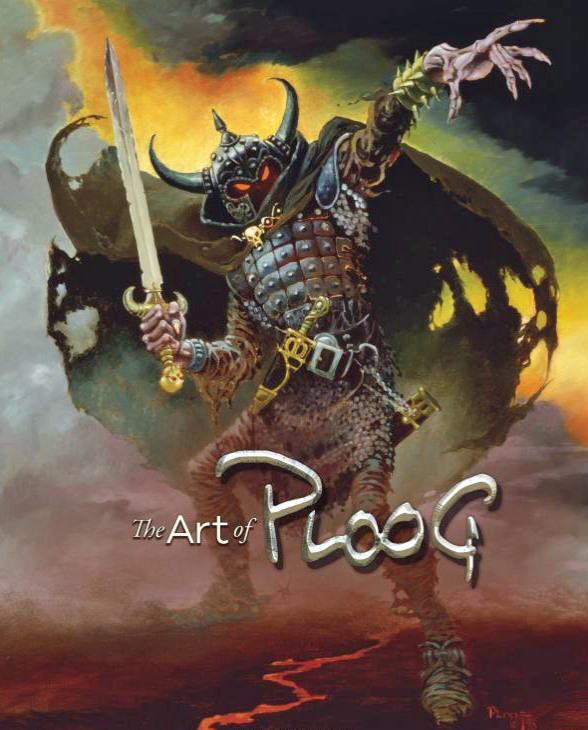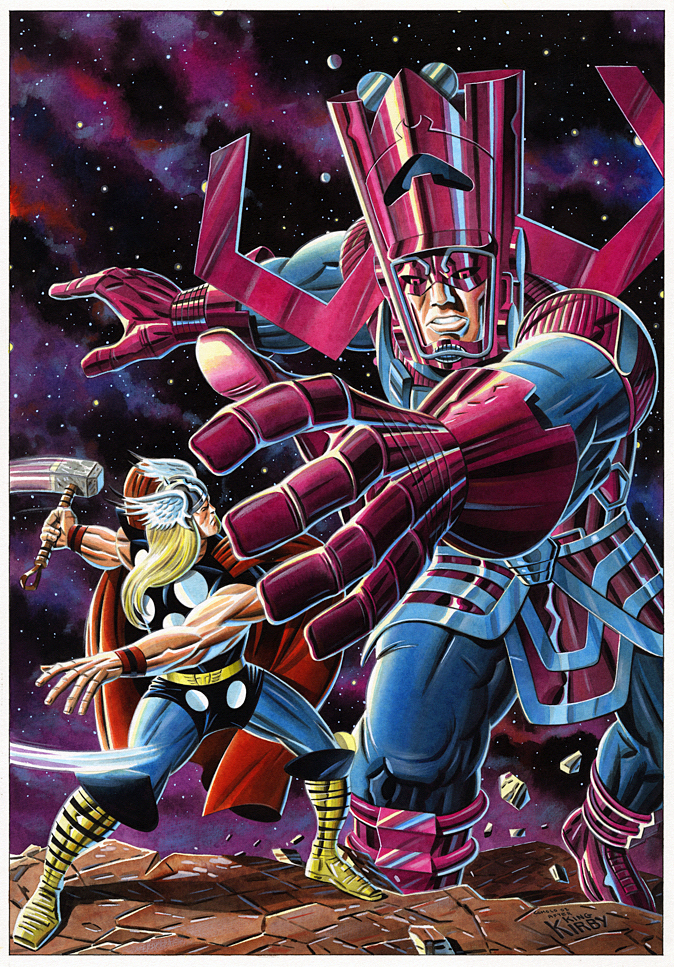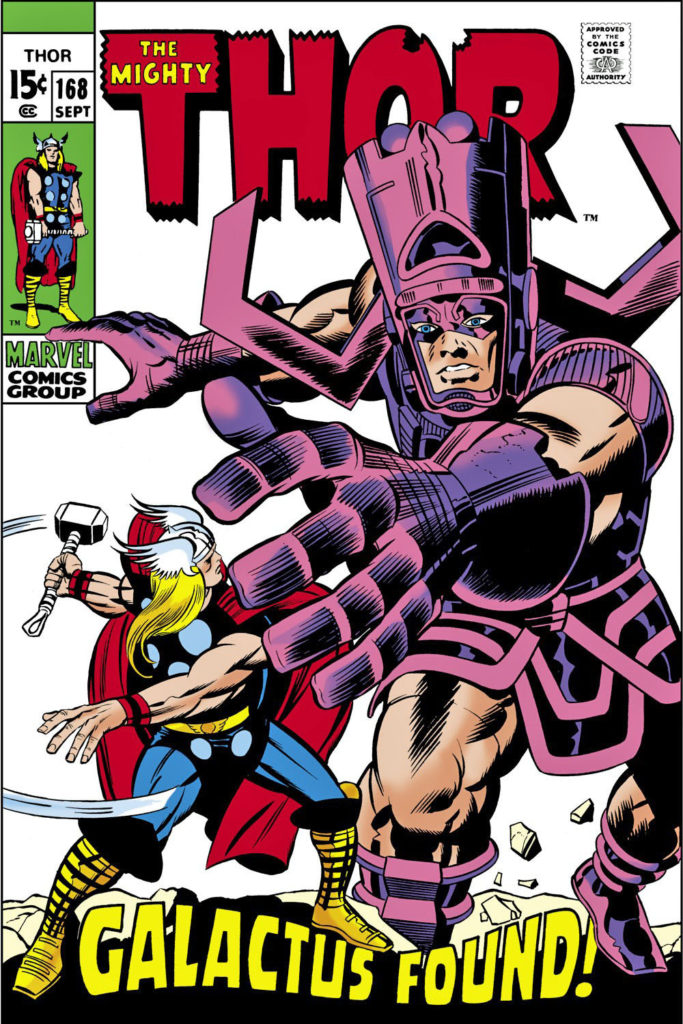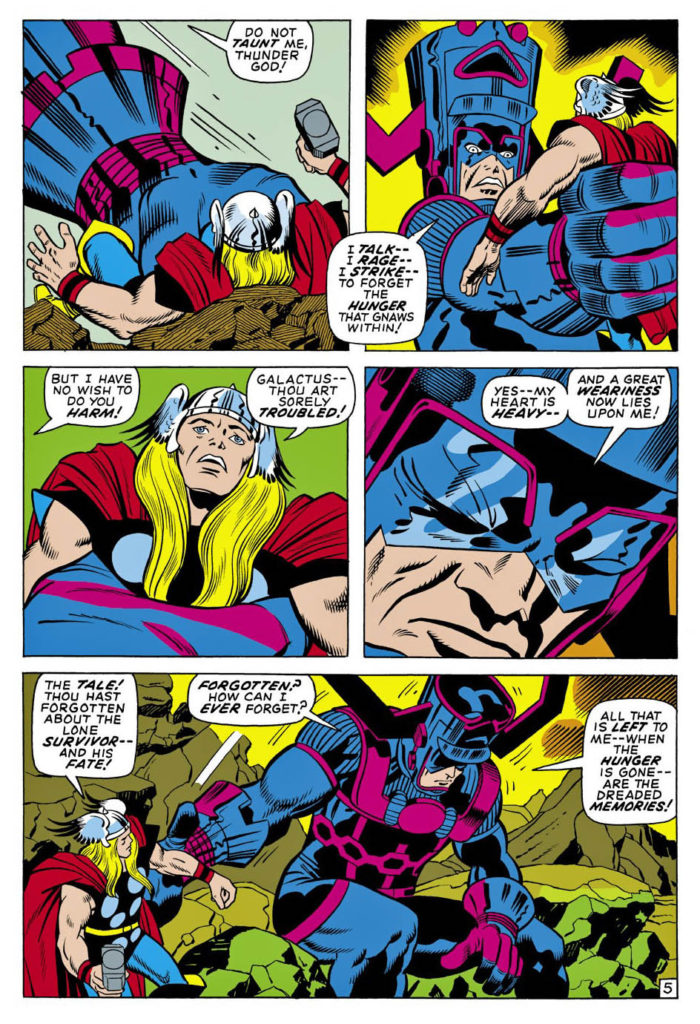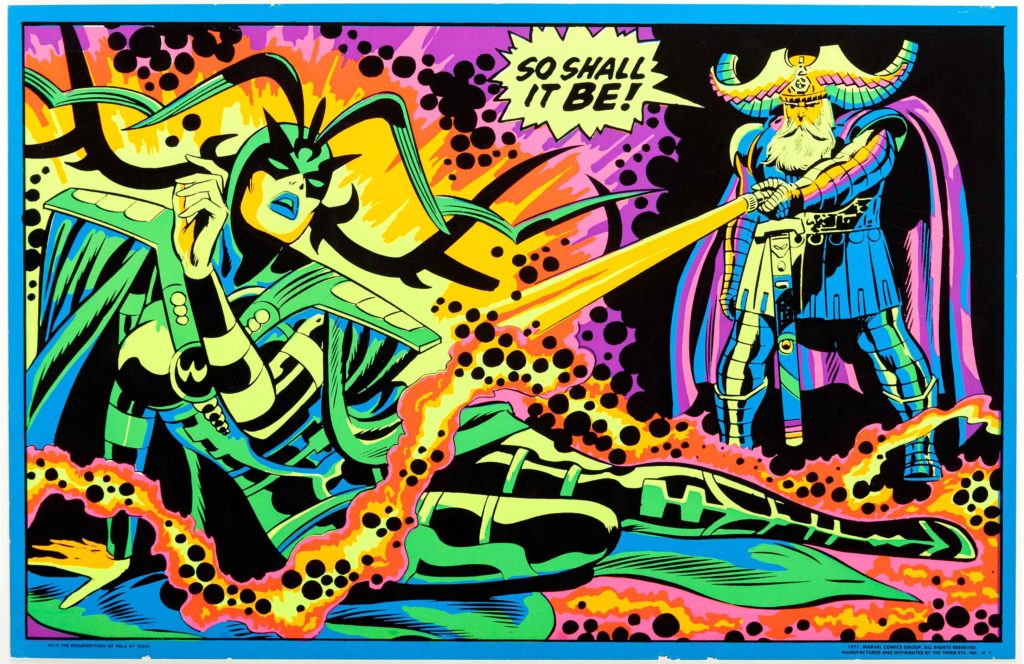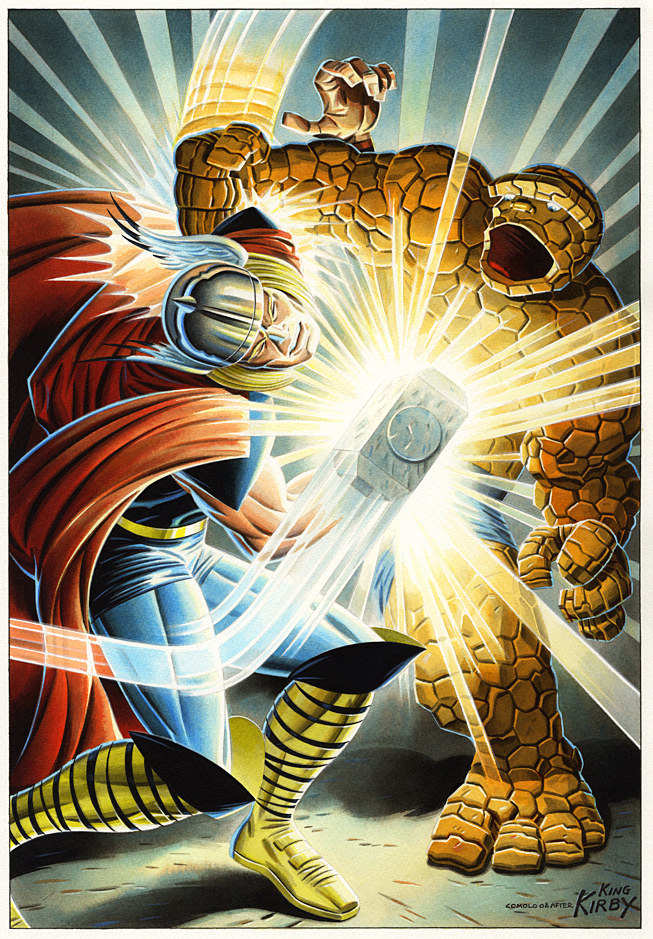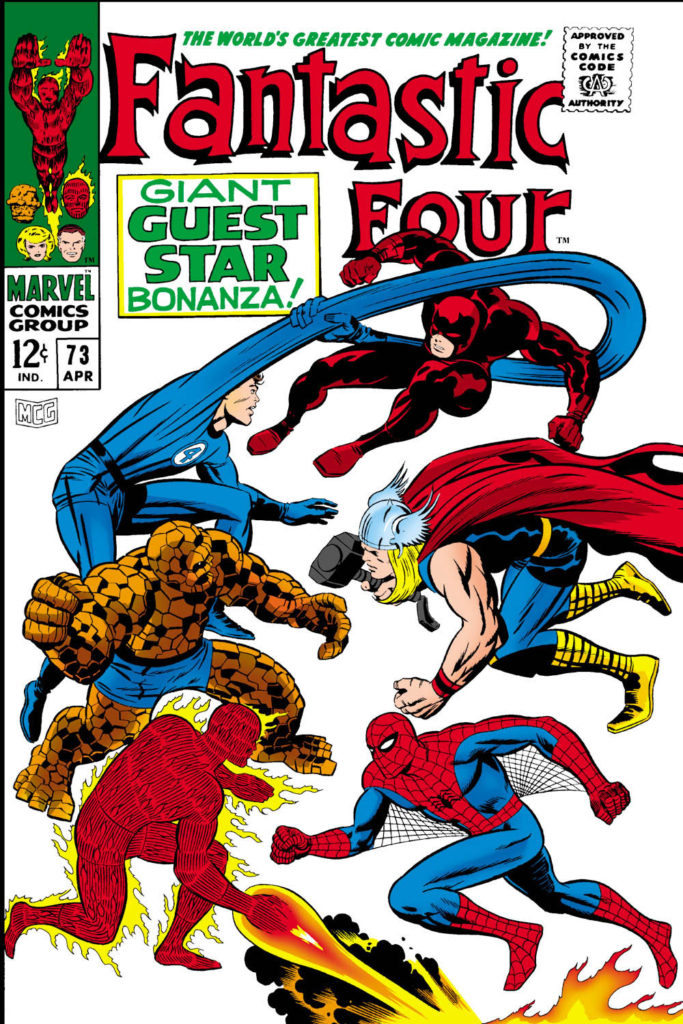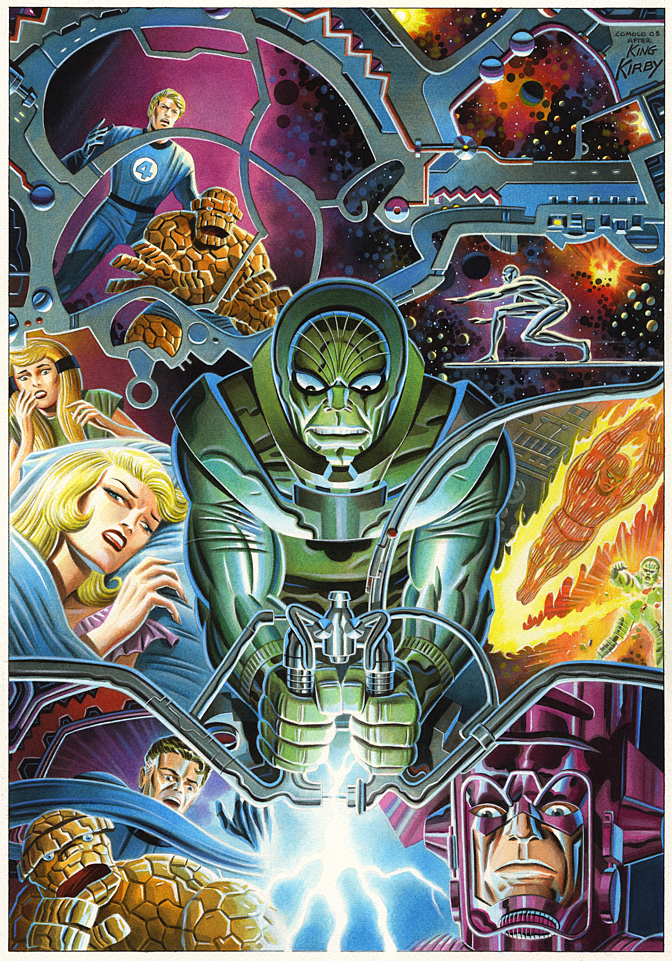June Brigman And Whilce Portacio — Snik!??
Alpha Flight #52, November 1987

Concluding — for now — our two-week series celebrating a few important X-Men anniversaries in 2020.
A full-page splash of an iconic superhero… on the phone?
Well yes, why not, if done well?
And here in Alpha Flight it’s done very well, by the talented June Brigman and Whilce Portacio.
I love the look on Logan’s face. And, his coif reminds me of the line from great Warren Zevon song “Werewolves of London:”
“His hair was perfect.”
Wolverine is not self-quarantining here. I double-checked. He’s just chilling at the moment. Also, note there are two things you won’t see anymore in a Marvel Comic. A phone cord and a cigar; old technology and a bad influence on kids, in the order.
But Snik?!? Someone apparently forgot the “t” in Snikt? That’s an odd one. Chris Claremont first used “Snikt” way back in X-Men #116. And, apparently it’s become a legit trademark for the sound of Wolverine’ claws.
Fun fact: The story continues — with Wolverine — in Alpha Flight #53 and, while also inked by Whilce, its penciled by none other than Jim Lee, whose very first Marvel work was two issues earlier, in #51. But this time, he draws Wolverine, a sign of things to come.
Fun fact #2: Whilce and I bumped into each other —- both of us with unscheduled visits — on Free Comic Book Day a few years ago. Pretty fun and random coincidence — its not like San Diego is a small county, or only has one comic book store.
Fun fact #3; If for any odd reason you have not read the Power Pack series by Brigman and Louise Simonson, well, stop what you’re doing and get to it. Brilliant. And fun!
More X-men and Wolverine related posts late in the year. Stay tuned.



